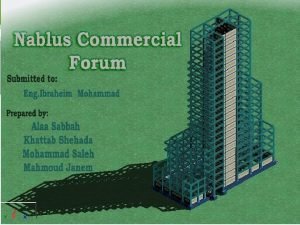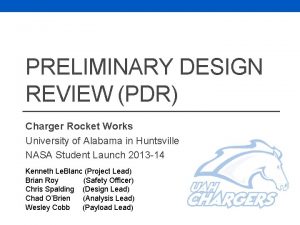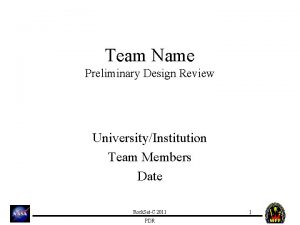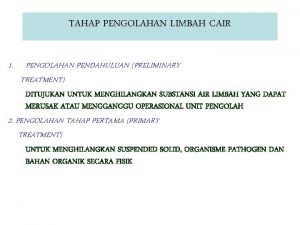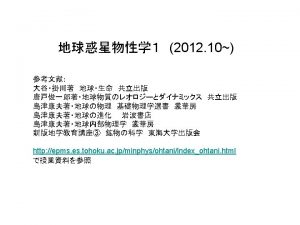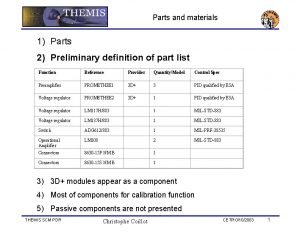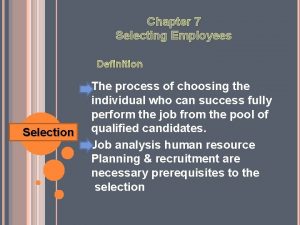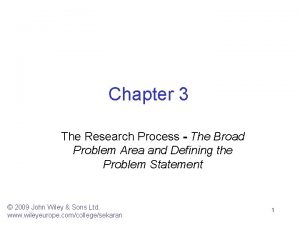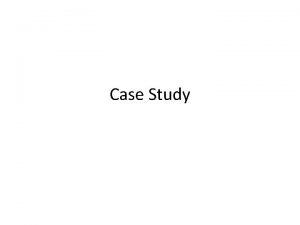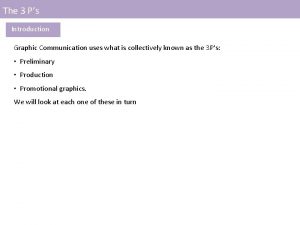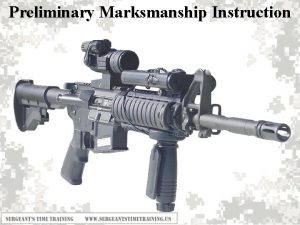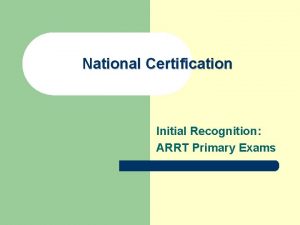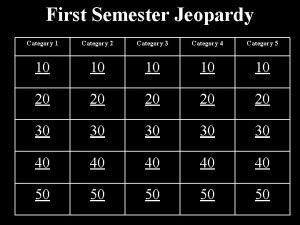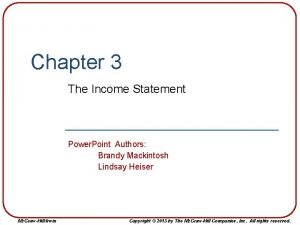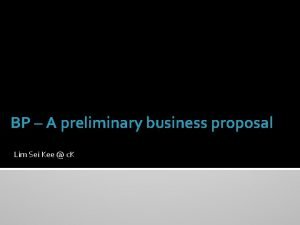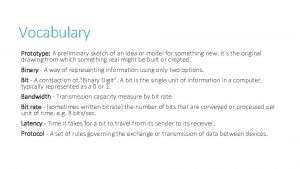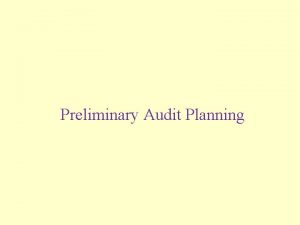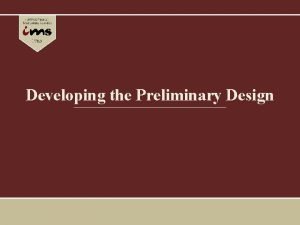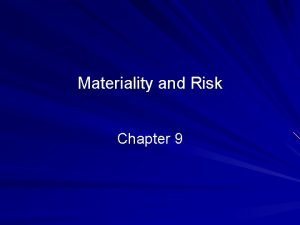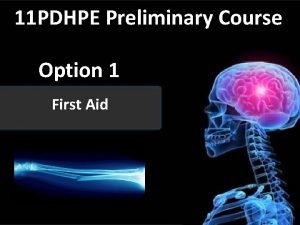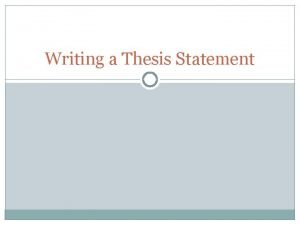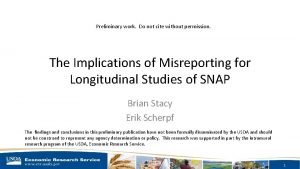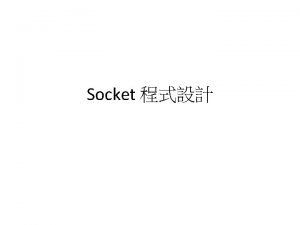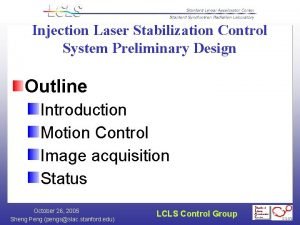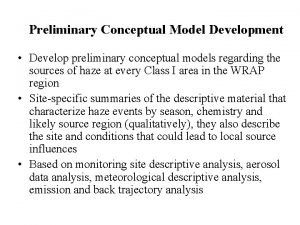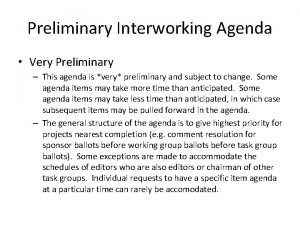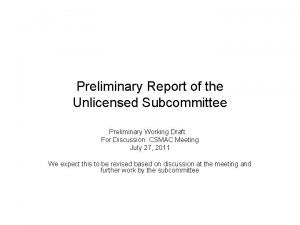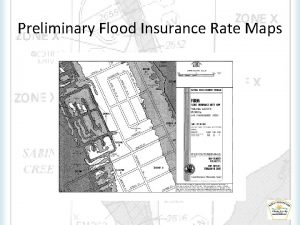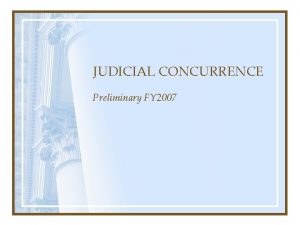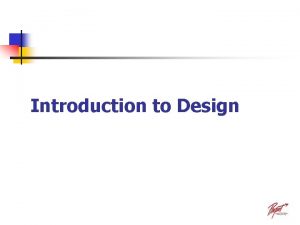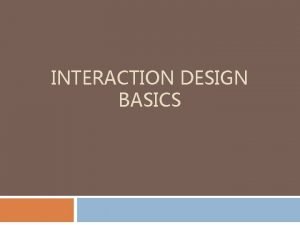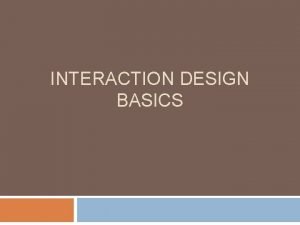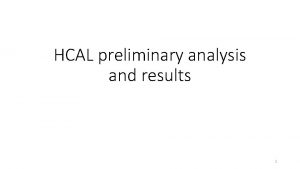Outline CH 1 Introduction CH 2 Preliminary Design











































- Slides: 43


Outline CH 1. Introduction CH 2. Preliminary Design CH 3. 3 D Model

CH. 1 Introduction This tower “ Nablus Commercial Forum “ has an area of 1800 m 2 of basement. 23 floors and 1 basement garages surrounded by basement wall. Uses of floors are many: Parking, Offices, Services and Halls. There heights are 4. 1 and 4. 6 m. Page 3

. CH 1 Design Data The following codes and standard. S will be used : ACI 318 -08. UBC 97. IBC 2009. Page 4

CH 1 Design Data Ø Structural material The compressive strengths of concrete are : f’c = 28 Mpa for slabs and beams. f’c = 44 Mpa for mat foundation , Columns and shear walls. Yield strength of Steel : fy = 420 Mpa. Page 5

Design Data CH 1 ØNonstructural materials : These materials include bricks, masonry stones, tiles and fill material. Page 6 Table below shows the unit weight of some materials : Table 1. 1, Nonstructural material density Material Density (KN/m 3) Reinforced concrete 25 Blocks 12 Masonry 26 Tiles 25 Mortar 23 Plastering 23 Selected Filler (compacted base coarse ) 19 Polycarbonate 0. 4

Design Data CH 1 Loads: Gravity loads : Table 1. 2, heights, uses and loads Height Use Live load SDL Basement 4. 1 Garage 5 4 Ground & 1 -3 4. 6 Retail Market 5 4 4 -6 4. 6 Stock market, Exchange hall 5 4 7 -19 4. 1 Offices 3 4 20 -24 4. 1 Restaurants 5 4 floor Page 7

CH 1 Design Data Mechanical masonry: with 5. 12 KN/m Escalators : Reactions of escalators R 1, R 2 R 1=. 67 h +3000 kg = 29. 4 KN R 2=. 67 h +2300 kg = 22. 6 KN These reactions should be distributed to the beams that carrying the escalators. Page 8

CH 1 Design Data Lateral load : Seismic loads : The structure is located in Nablus, which is classified as 2 B according to Palestine seismic map. Soil load: 3 Page 9

CH 1 Building Structural Design Using two way solid slab that is A concrete slab supported by beams along all four edges and reinforced with steel bars arranged perpendicularly. Page 10

CH. 2 Preliminary Design Fig. 2. 1 , grid and column distribution Page 11

CH. 2 Preliminary Design Fig. 2. 2, columns and beams name Page 12

CH. 2 Preliminary Design The principal purposes for preliminary design of any structure are: (1)To obtain quantities of materials for making estimates of cost. (2) Obtain a clear picture of the structural action, (3) Establish the dimensions of the structure, and, (4) Use the preliminary design as a check on the final design. Page 13

CH. 2 Preliminary Design The principal purposes for preliminary design of any structure are: (1)To obtain quantities of materials for making estimates of cost. (2) Obtain a clear picture of the structural action, (3) Establish the dimensions of the structure, and, (4) Use the preliminary design as a check on the final design. Page 14

Design of Slab CH 2 Using Direct Design Method (DDM) Thickness of the slab: h min = fy = 420 Mpa, Ln = 9. 4 -. 8 = 8. 6 m = So, h min = 0. 21 m, we use 23 cm. Page 15

CH 2 Design of Beams Maximum Length of the span in the project = 9. 9 m. Min. depth of beams = ACI 318 - Table 9. 5(a) So, min. depth = = 0. 53 m , use 600 X 600 mm. Page 16

CH 2 Design of Frame The following figures will display the analysis of Frame in y-direction. Page 17 Fig. 2. 4, Frame in Y – direction

CH 2 Design of Frame Fig 2. 5 C. S & M. S Page 18

CH 2 Page 19 Design of Frame

CH 2 Page 20 Design of Frame

CH 2 Design of Column The preliminary columns dimensions can be estimated using the principle of tributary area. ϕPn. max = 0. 8ϕ[0. 85 fc (Ag – A st) +fy A st ] Page 21

CH 2 Design of Column the following figure shows sample of column is to be design using tributary area. Fig. 2. 3, position of column 40 Page 22

CH 2 Design of Column G 2 -Column 40: First Floor =((9. 15 х3. 095) х (. 23 х 25+4))+(9. 15+3. 095) х 0. 47 х 0. 6 х 25+0. 55 х 25 х 4. 1) х 1. 2+5 х (9. 15 х 3. 095) х 1. 6=698. 7 KN. Floors 2, 3 =(((9. 15 х 3. 095) х (. 23 х 25+4))+(9. 15+3. 095) х 0. 47 х 0. 6 х 25+0. 55 х 25 х 4. 6) х 1. 2+5 х (9. 15 х 3. 095) х 1. 6=703. 2 KN. Floors 4, 5 =(((9. 15 х 4. 295) х (. 23 х 25+4))+(9. 15+4. 259) х 0. 47 х 0. 6 х 25+0. 55 х 25 х 4. 6) х 1. 2+5 х (9. 15 х 4. 259) х 1. 6=926. 7 KN. G 2 =698. 7+703. 2 X 2+926. 7 X 2=3958. 5 KN. Page 23

Design of Column CH 2 Table 2. 1 , Columns dimensions and groups Group Name G 1 Sub. Group Max. Load Dimensions Columns 1501 500*500 36, 27, 19, 10, 3, 4 3959 500*500 5, 28, 29, 37, 38, 39, , 40, 41, 42, 43, 35, 26, 18, 9, 2 G 3 -1 G 3 -2 7613. 52 1380 600*600 500*500 11, 30, 31, 20 G 4 -1 G 4 -2 G 4 -3 G 4 -4 13854. 7 7838. 4 6083 2255 800*800 700*700 600*600 500*500 G 5 -1 22991. 6 1000*1000 G 5 -2 G 5 -3 G 5 -4 G 5 -5 14685. 2 11356 7291 3226 900*900 800*800 700*700 600*600 G 6 -1 36526. 8 1300*1300 G 6 -2 28326. 9 1200*1200 G 6 -3 25038. 3 1100*1100 G 6 -4 G 6 -5 16575. 9 8114 1000*1000 900*900 G 2 G 3 G 4 32, 33, 34, 25, 17, 8, 13, 14, 6, 7, 1 G 5 21, 22, 24 G 6 Page 24 15, 16, 12, 23

CH. 3 Page 25 3 D Model

CH 3 Page 26 Modifications Column Beam Wall Torsional Constant 0. 7 0. 35 I about 2 axis 0. 7 0. 35 Slab Mat Bending M 11 Modifier 0. 25 Bending M 22 Modifier 0. 25 Bending M 21 Modifier 0. 25

CH 3 Seismic LOAD The UBC 97 code seismic parameters are as follows : - The seismic zone factor, z=0. 2. - The soil is very dense soil and soft rock , so the soil type is Sd. - The importance factor: I=1. 25 - The ductility factor : R = 5. 5 - The seismic coefficient Ca= 0. 28. - The seismic coefficient Cv= 0. 40. Page 27

CH 3 Verification Compatibility : Page 28 Fig 3. 1, compatibility view

CH 3 Verification Equilibrium : The results by hand calculation as follow : Total live load = 84185. 45 Live Load with 1. 75% Total dead load =233879. 1 with 5% error Page 29

CH 3 Verification Stress Strain Relationships : If we compare the moment values for the previous figure with hand calculation moment for interior beam which equal to: From SAP : We have an error = 2. 9% which is acceptable. Page 30

CH 3 Verification Deflection : By taking an average of deflection on corners of max. panel deflection at seven story and conduct it from deflection in the middle of panel , the figure below shows the deflection at panel. Page 31

CH 3 Page 32 Verification Fig 3. 2, Max deflection on panel

CH 3 Verification Base Shear : To design or check base shear the following equations shall be determined as follow : The total design base shear needn’t exceed the following : The total design base shear needn’t less than the following : Page 33

CH 3 Verification The error in X- direction can be acceptable in this case , because the structure is not symmetric. Page 34

CH 3 Shear & Basement Walls The thickness of shear wall change from 0. 65 m for first 8 story to 0. 55 from story 8 -16 and 0, 45 from story 16 -24. The thickness of the basement wall is 30 cm. The basement has additional lateral load from soil more than other walls. Page 35

CH 3 Design of Mat Foundation To determine the mat thickness : Vu = 30000 KN ( from SAP 2000 ) Page 36

CH 3 Design of Slab The figures below show the moment on the shell : Fig 3. 3, M 11 { Min} Page 37 Fig 3. 4, M 22 { Min}

CH 3 Design of Slab Fig 3. 5 , M 11 {max} Page 38 Fig 3. 6 , M 22 {max}

CH 3 Design of Slab Fig 3. 7 , Reinforcement in x – direction Page 39

CH 3 Design of Slab Fig 3. 8 , Reinforcement in y – direction Page 40

CH 3 Design of Beams Using SAP program to determine the reinforcement needed for a beam : Fig. 3. 9 flexure steel Fig. 3. 10 Torsion steel Page 41

CH 3 Design of Beams Fig. 3. 11 , Beam reinforcement Page 42

Page 43
 Mla style outline
Mla style outline Preliminary outline
Preliminary outline Preliminary outline speech
Preliminary outline speech Preliminary design review example
Preliminary design review example Pdr preliminary design review
Pdr preliminary design review Preliminary design review example
Preliminary design review example The quote sandwich example
The quote sandwich example Preliminary budget
Preliminary budget Preliminary treatment adalah
Preliminary treatment adalah Preliminary survey
Preliminary survey P 波
P 波 Preliminary materials
Preliminary materials Preliminary interview
Preliminary interview Broad problem area in research
Broad problem area in research Gayne corporation's contribution margin ratio
Gayne corporation's contribution margin ratio Tinutukoy ang simula at hangganan ng pananaliksik.
Tinutukoy ang simula at hangganan ng pananaliksik. Preliminary graphics
Preliminary graphics Systems development life cycle
Systems development life cycle Preliminary thesis statement
Preliminary thesis statement Dime and washer drills
Dime and washer drills Arrt preliminary score change
Arrt preliminary score change Image strategies
Image strategies A preliminary synopsis of a film's action is called
A preliminary synopsis of a film's action is called Determine junktrader’s preliminary net income.
Determine junktrader’s preliminary net income. Single flat wrap perm
Single flat wrap perm Preliminary business plan
Preliminary business plan Preliminary prototype
Preliminary prototype Preliminary audit adalah
Preliminary audit adalah Temporary hair color milady
Temporary hair color milady Waterfall strategy marketing
Waterfall strategy marketing Ihrm training and development
Ihrm training and development Preliminary objectives
Preliminary objectives Advertising research process
Advertising research process Preliminary statement definition
Preliminary statement definition Preliminary review definition
Preliminary review definition Materiality and risk
Materiality and risk Preliminary steps of haccp
Preliminary steps of haccp Preliminary marketing plan
Preliminary marketing plan Crisis management pdhpe
Crisis management pdhpe Time management thesis statement
Time management thesis statement Preliminary ruling
Preliminary ruling Introduction of recruitment and selection
Introduction of recruitment and selection Preliminary works cited
Preliminary works cited Preliminary research
Preliminary research

